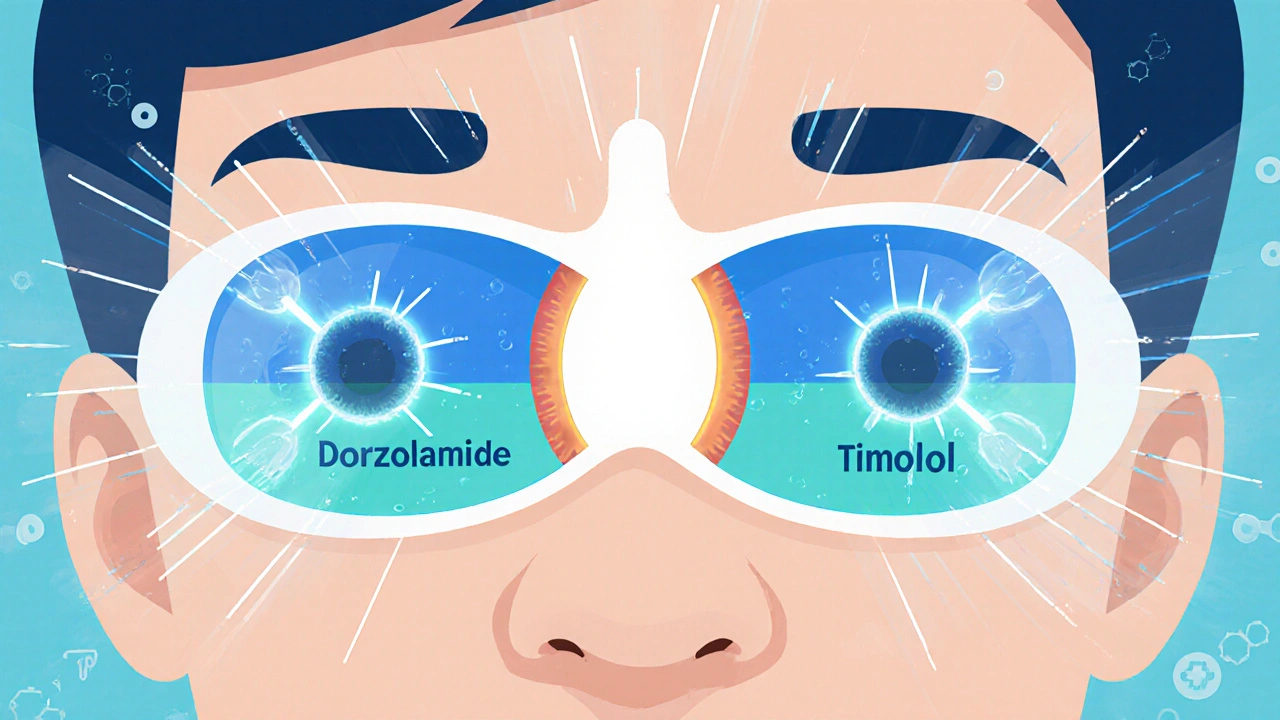Combination Eye Drops: What They Are and How They Work
When you need to treat more than one eye problem at the same time, combination eye drops, eye medications that mix two or more active ingredients in a single bottle. Also known as multi-component eye drops, they’re designed to simplify treatment and improve adherence—especially for people managing chronic conditions like glaucoma or chronic dry eye. Instead of juggling three different bottles, you use one. That’s not just convenient—it’s clinically important. Skipping doses because your routine is too complicated can make eye conditions worse, not better.
These drops usually pair a drug that lowers eye pressure—like a beta-blocker or prostaglandin—with another that reduces inflammation or fights infection. For example, some combine timolol, a beta-blocker used to control intraocular pressure in glaucoma with dorzolamide, a carbonic anhydrase inhibitor that also lowers fluid buildup in the eye. Others mix an antibiotic like ciprofloxacin, a broad-spectrum antibiotic used for bacterial eye infections with a steroid like prednisolone, a corticosteroid that reduces swelling and redness. Each combo is carefully chosen based on what the eye needs most.
They’re not for everyone. If you’re using combination drops, you need to know what’s in them. Some ingredients can raise your blood sugar, worsen asthma, or interact with heart meds. People with allergies or sensitive eyes might get more irritation than relief. And while these drops save time, they can be more expensive than buying the ingredients separately—so it’s worth asking your doctor if a single-agent approach might work better for you.
What you’ll find in the posts below are real-world examples of how these drops are used, what alternatives exist, and what side effects people actually report. Some posts dive into how genetic differences affect how your body responds to these medications. Others compare the latest formulations to older versions, or explain why certain combinations are being phased out. You’ll also see how conditions like dry eye and glaucoma often overlap, and why treating both at once makes sense. No fluff. Just clear, practical info to help you understand what’s in your bottle and why it matters.

Dorzolamide-Timolol: The Ultimate Solution for High Eye Pressure
- by Colin Edward Egan
- on 31 Oct 2025
Dorzolamide-timolol is a two-in-one eye drop used to lower high eye pressure in people with glaucoma or ocular hypertension. It reduces fluid production in the eye and is effective, affordable, and widely prescribed. Learn how it works, its side effects, and how to use it correctly.
